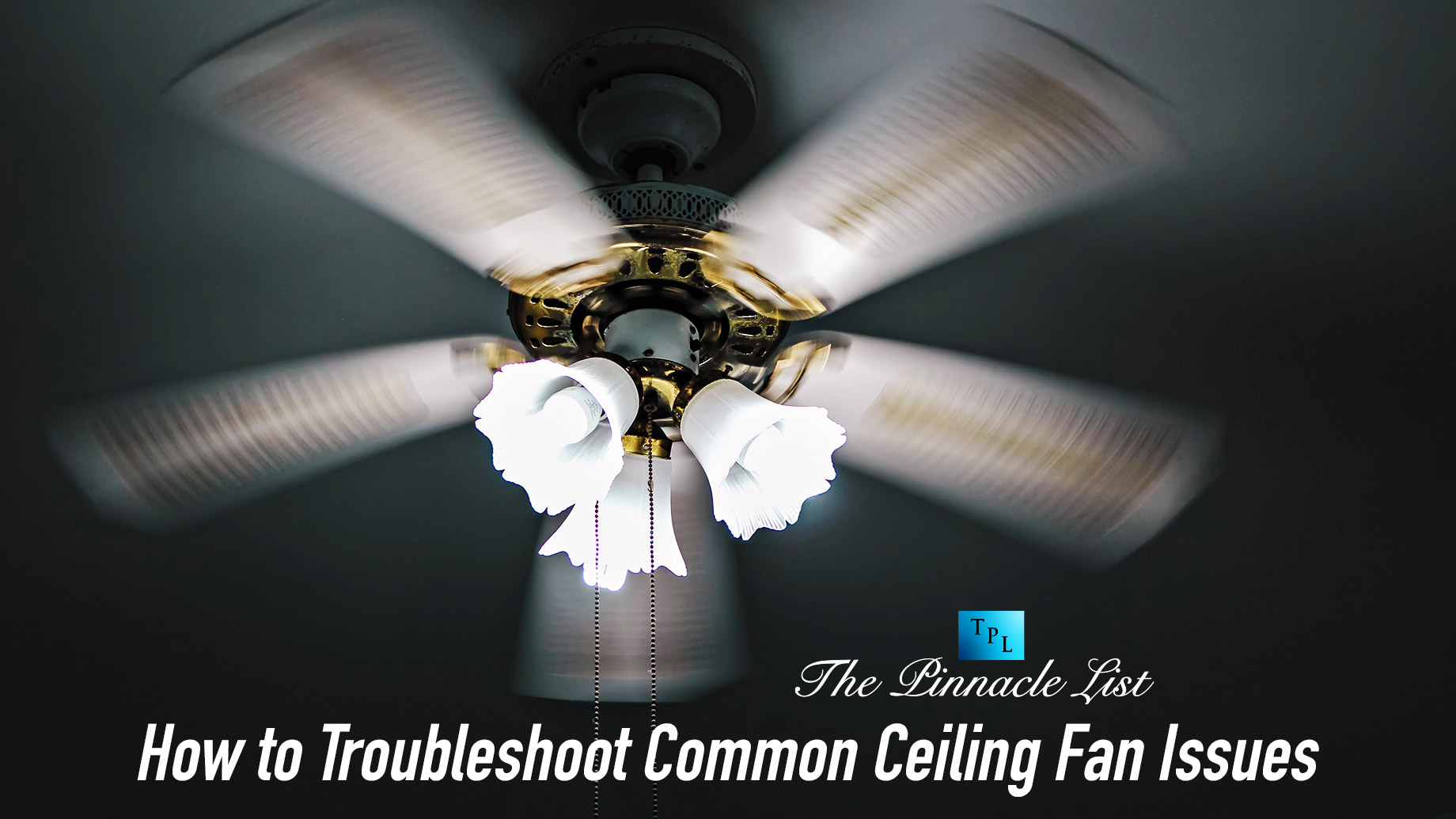
One of the most common and efficient ways to improve comfort in your house is with a ceiling fan. They give a refreshing breeze in the hot weather and also spread warm air throughout the chilly months. But just like any other household appliance, ceiling fans can have some problems that hinder their performance. Knowing how to fix common ceiling fan issues can save you time and money by keeping them operational for a longer period. Have ceiling fan problems? This article is here to help with repairs.
Fan Not Working
Ceiling fans that fail to start or operate correctly are one of the most common problems. When your ceiling fan is not spinning, the problem could be due to poor power supply. Verify that the fan is wired to a live electrical circuit. Make sure the circuit breaker isn’t tripped, and the wall switch is in the right position for the fan. If the fan does not, in this case, there is a possibility that it failed due to the setting on the pull chain or remote control you used is set to “off” instead of “on”. Also, take a look at the fuse or breaker in your fan; an issue here could stop the fan from working.
Fan Blades Not Spinning
If the fan blades are not moving, the motor of the fan or its connections could be defective. Check first to see if the fan is getting power. If the fan is turned on but has motionless blades, the problem comes from its motor. Look closely at the wiring to the fan itself, especially near the motor and capacitor. In some instances, the capacitors in the motor can go out, which will prevent the blades from throwing air. If you suspect a motor problem, the capacitor may need to be replaced, or an advanced diagnosis from a professional may be required.
Uneven or Wobbly Blades
A typical ceiling fan problem is one or more of the blades turning unevenly or wobbling. The source of this trouble is unbalanced blades and/or improper mounting. As an initial step, look for proper alignment between the blades and make sure that the blades are attached securely to the blade brackets. In this case, you need to adjust the blades so that they are level. A lot of linking fans are sold along with a harmonizing set, including body weights to correct cutter shake. These weights have to be attached to the blade edges, as mentioned, to balance the fan. In addition, you can mount the ceiling fan with light by fastening the mounting bracket downrod style to the ceiling itself; this will help eliminate wobbles.
Noisy Operation
Ceiling fans emit strange sounds when you are using them: they can hum, rattle, and more. Loose parts can result in a loud motor, causing dialogue to go unheard during programs. The first things to do are go ahead and try to tighten all instances, i.e., every screw or bolt that could be securing the fan: blades, motor mount. It can also accumulate debris like dust on the blades, which may be at fault for its malfunction, and noise that may be heard. If the fan is still making noise, check the motors and bearings of the fan.
Fan Reversing Function Not Working
Fans that have a reverse function let you switch the direction of the blades to match the season. If the reversing function on your fan doesn’t work, suspect the switch or remote instead. if the fan is not working, and the switch for it is in the proper position. If you don’t have any response on the switch, make sure everything is plugged in and tight. If the fan is remote-controlled, make sure the remote works and that the batteries have charged. Look at the manual for your fan for details on how to troubleshoot problems when it comes to reversing.
Insufficient Airflow
Another possibility could be that the ceiling fan may have been installed incorrectly, which in turn can work against its natural design and function. Make sure the blades are clear and the fan is rated for space size. A small fan in a large room may not have the range to provide enough airflow. If you have a look at the fan blades, you can clean up any dust buildup on them if they get too dirty, it will affect their effectiveness. Also, ensure the fan speed settings are adjusted accordingly to get the amount of air you desire.
If troubleshooting any of the many common ceiling fan problems seems too much for you, there has to be an alternative. Loose connections and improper installation can be handled, while methods to lessen the noise using simple steps such as checking fan placement play into how it works. We also provide guidance on things you should do to maintain your garage door in a proper manner (i.e. cleaning, tightening parts, etc) so that future issues can be avoided. By implementing these troubleshooting tips, you can keep your ceiling fans running smoothly and effectively to improve the overall quality of life in your home for years.